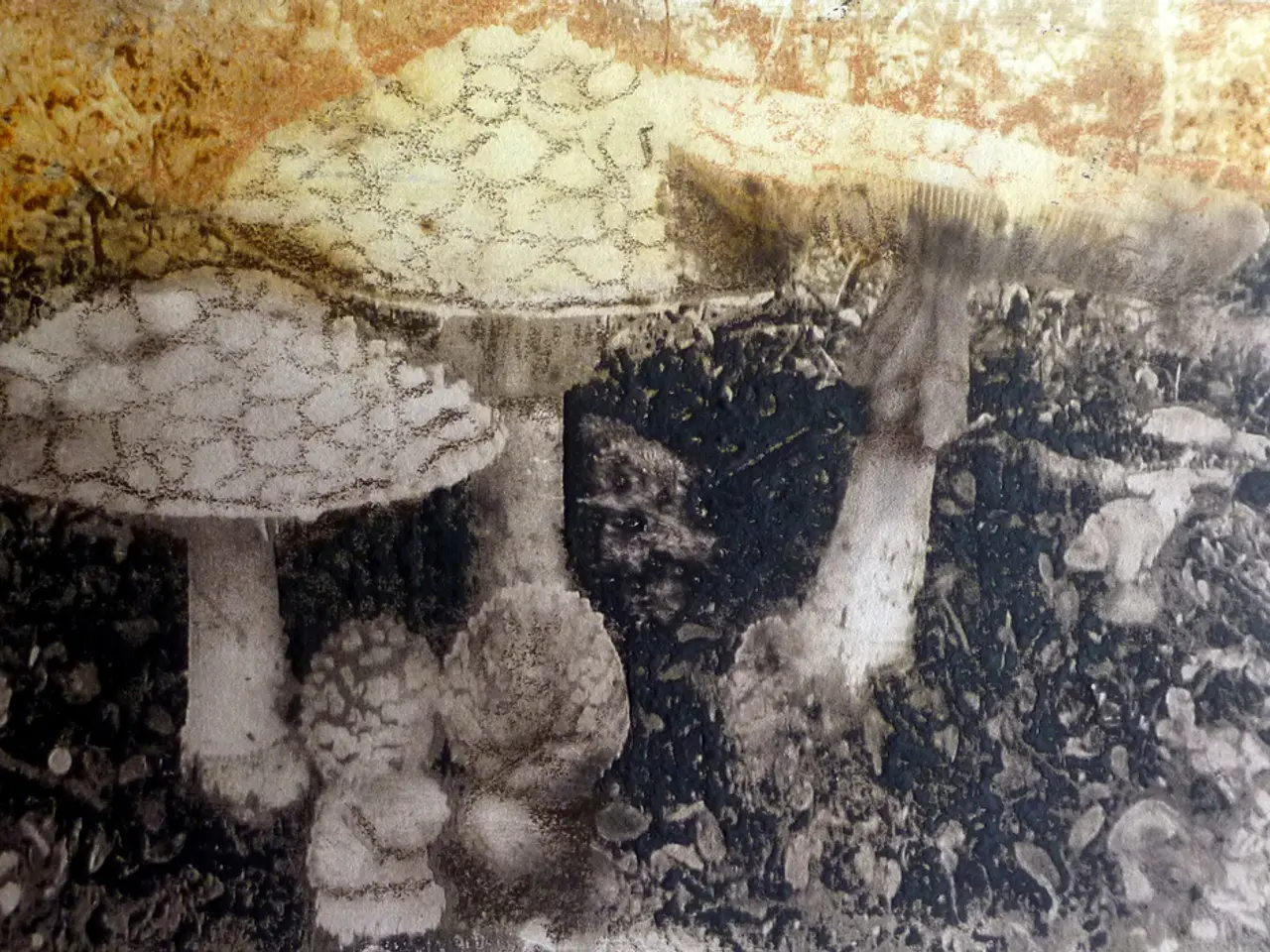Guide for Home Cultivation of Lion's Mane Mushrooms
Growing Lion's Mane mushrooms at home has never been easier, thanks to organic mushroom growing kits. These beginner-friendly kits provide a straightforward and rewarding experience for mushroom enthusiasts and novices alike.
To start your Lion's Mane mushroom growing journey, unpack your kit. Inside, you'll find a fruiting block containing substrates like hardwood sawdust, straw, and mushroom spawns. No mixing or additional setup is required, making these kits ideal for beginners[2].
Maintaining humidity and airflow is crucial for the mushrooms' growth. Place the fruiting block inside a plastic bag or container in a humid environment. Mist the inside of the bag several times a day to keep moisture levels high. Ensure fresh air circulation by opening or cutting small slits (such as “X” shapes) on the bag to allow the mushrooms to breathe and grow properly[1][2].
Positioning the fruiting block is also essential. Place it on its side on a plate or tray to support the growth of the spines typical of Lion’s Mane mushrooms. This sideways orientation encourages healthy mushroom development from the holes or cuts in the bag[1].
Keeping the kit in a well-lit area (indirect light is suitable) and at a temperature around 20–24°C (68–75°F) is ideal for Lion's Mane fruiting. Avoid direct sunlight as it can dry out the substrate[3].
In about 7 to 14 days after initiating fruiting conditions (misting and airflow), you should begin to see Lion’s Mane mushrooms emerge. Harvest when the mushroom's spines are well-formed and before they start to yellow or brown. Most kits allow for 1-2 flushes (harvests)[2][3].
The Lion's Mane mushroom is a good source of protein and initially tastes like lobster[4]. Growing your own mushrooms at home offers a fresh, gourmet alternative to store-bought varieties.
To create a humidity dome for the block, use a plastic bag and make small cuts for ventilation. If necessary, use skewers to hold the tent up. A humidity tent, skewers, a spray bottle, tape, and a tight container are additional materials needed for the growth process[1].
If you wish to expand beyond kits, you would start from grain spawn inoculated into sterilized hardwood sawdust substrate and maintain similar fruiting conditions. However, kits are the easiest way to start producing Lion’s Mane mushrooms at home[1].
Growing Lion's Mane mushrooms has become increasingly popular due to their simplicity in growth and potential health benefits. Identify the places where you want your mushrooms to grow on the block before it is incubated. With consistency in weather and humidity, the mushrooms will start growing in weeks, providing a rewarding and enjoyable experience for mushroom hobbyists[5].
References: [1] MushroomExpert. (n.d.). How to grow Lion's Mane mushrooms. Retrieved from https://www.mushroomexpert.com/lions-mane.html [2] MushroomMike. (n.d.). How to grow Lion's Mane mushrooms. Retrieved from https://mushroommike.com/growing-lions-mane-mushrooms/ [3] MycoMeditations. (n.d.). Growing Lion's Mane mushrooms. Retrieved from https://mycomeditations.com/growing-lions-mane-mushrooms/ [4] Healthline. (2019, February 19). Lion's Mane mushroom: Health benefits, side effects, and research. Retrieved from https://www.healthline.com/nutrition/lions-mane-mushroom#taste-and-nutrition [5] The Spruce Eats. (2020, March 25). How to grow Lion's Mane mushrooms. Retrieved from https://www.thespruceeats.com/growing-lions-mane-mushrooms-2020742
To achieve a pleasant home environment with nurtured Lion's Mane mushrooms, consider incorporating a home-and-garden aspect by creating a dedicated space for your mushroom kit. This could be an area in your home specifically designed for gardening, where it's easy to maintain the optimal humidity and temperature.
Once you have a collection of mushrooms, enhance your lifestyle by incorporating Lion's Mane into your meals, as it not only serves as a gourmet alternative to store-bought varieties but also boasts a unique flavor reminiscent of lobster.




